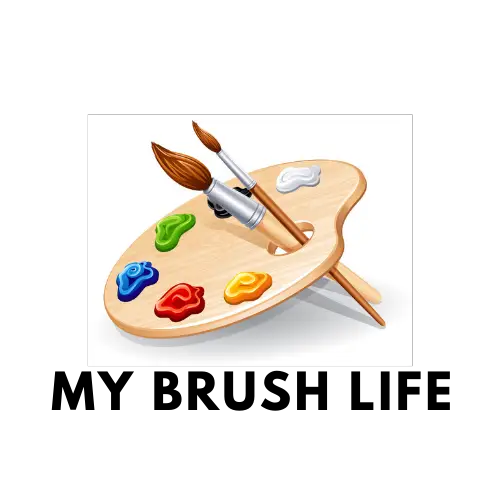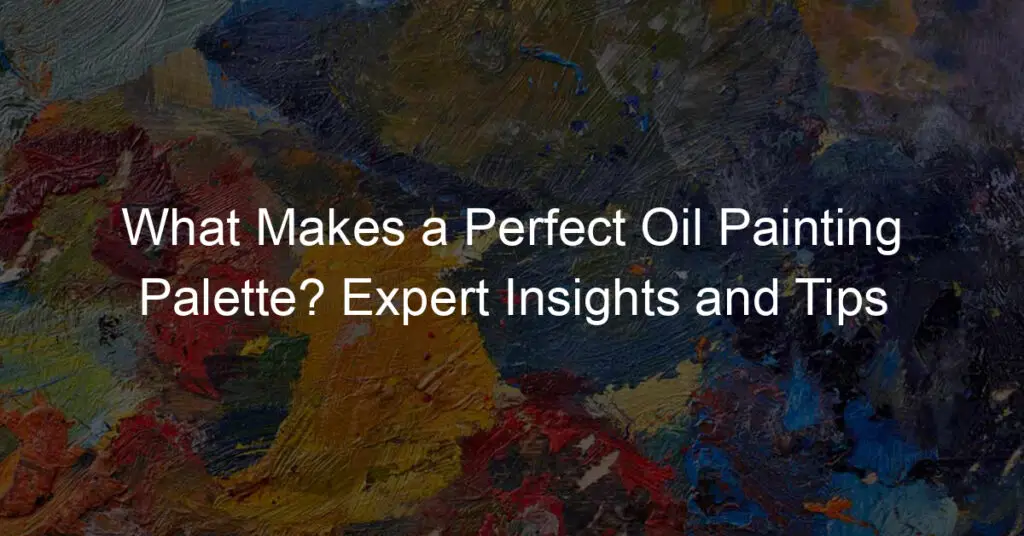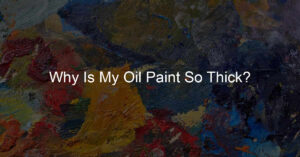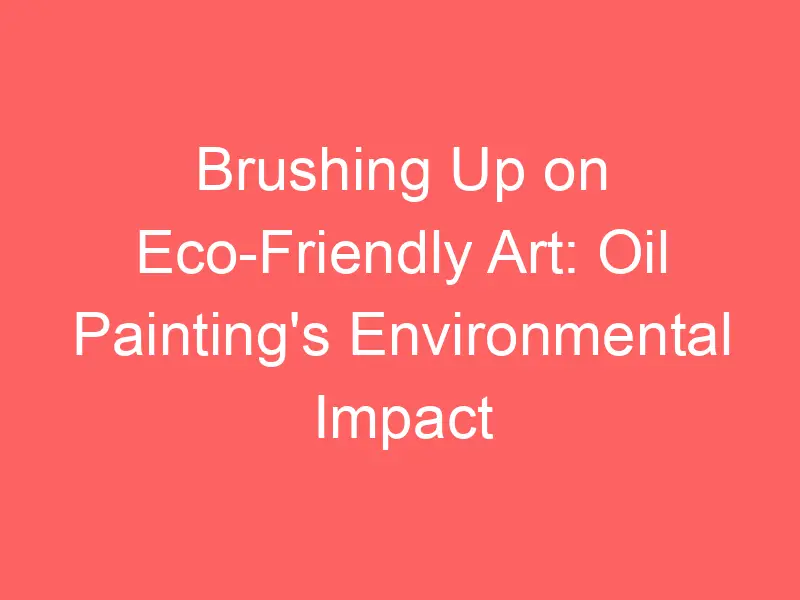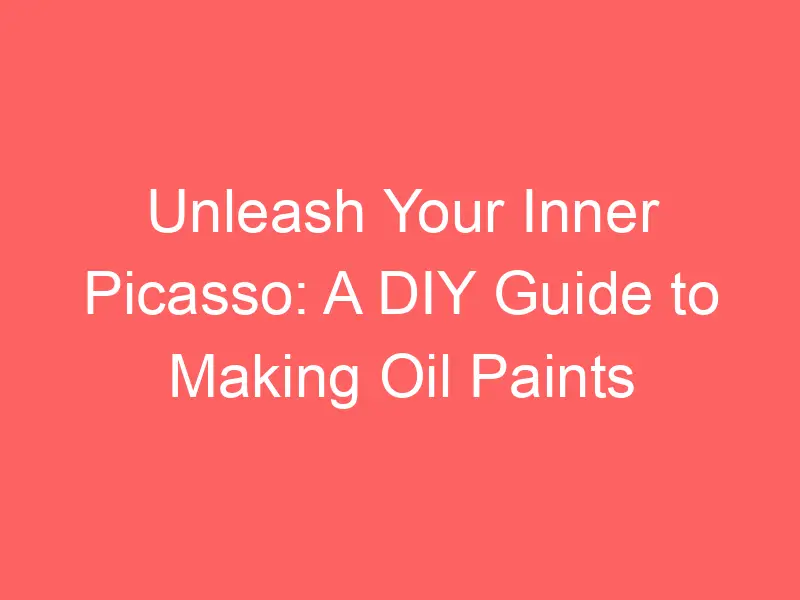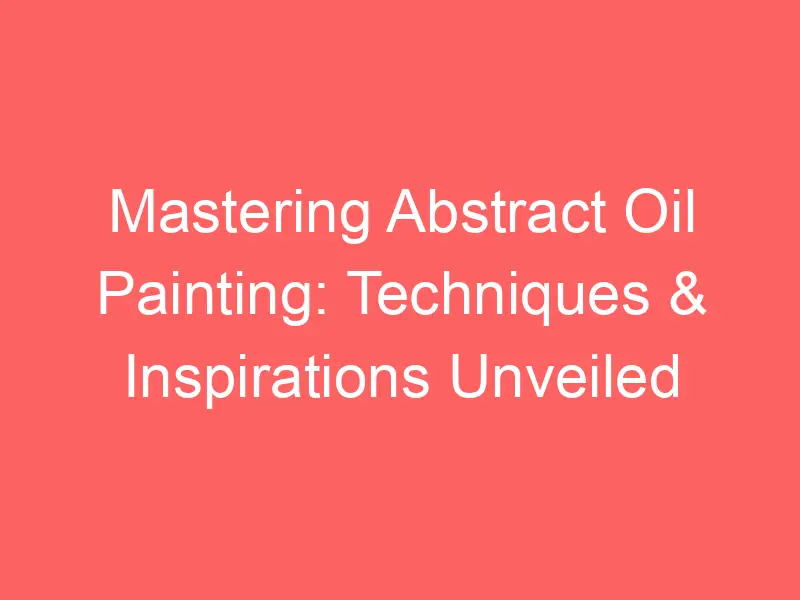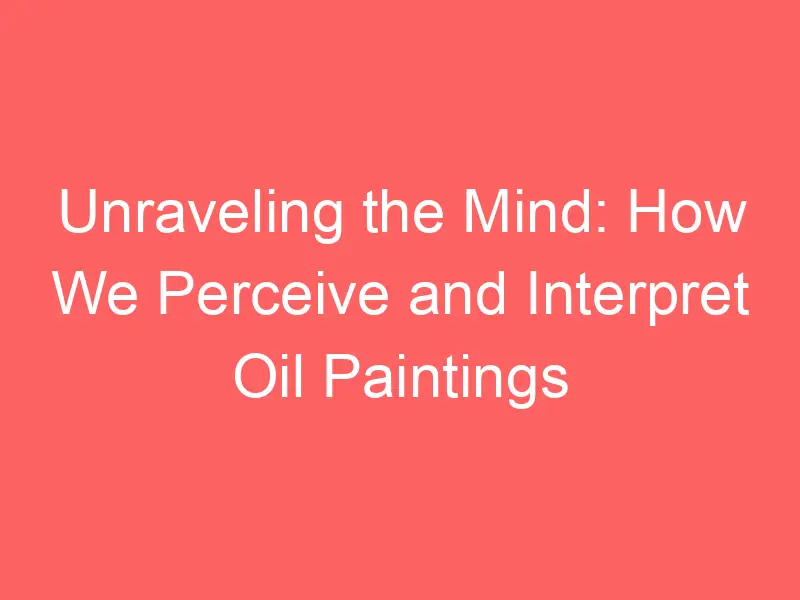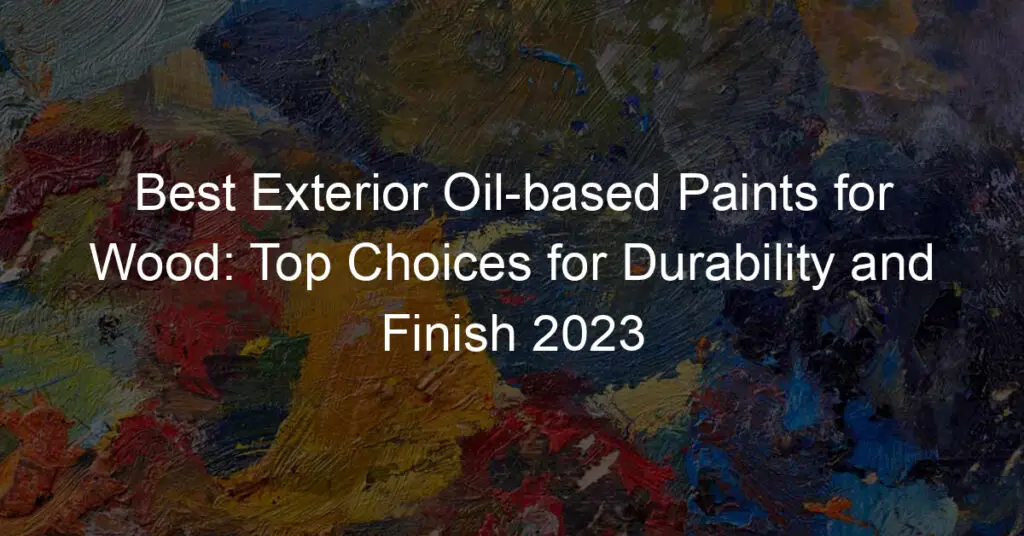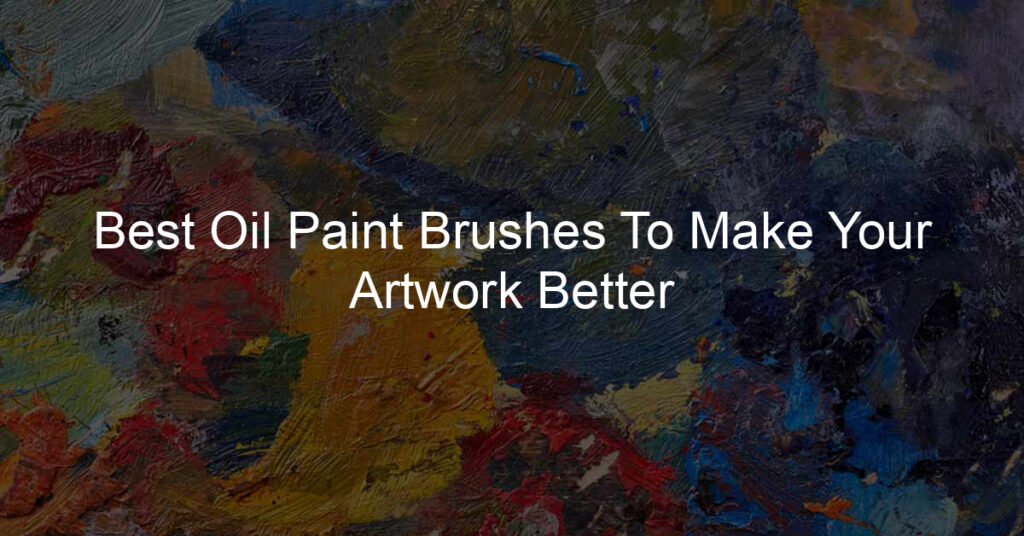The art of oil painting is a timeless practice that has captivated the interest of both professional and amateur artists throughout the centuries. At the heart of creating an engaging and visually striking oil painting lies the perfect oil painting palette. The palette is an essential tool that greatly impacts the final outcome of an artwork and significantly influences the artist’s creative process.
Selecting the right color combinations, material, and layout is vital to the success of oil painting. Understanding the various aspects that contribute to an ideal oil painting palette can make a significant difference in the artist’s work. This article will discuss the key elements to consider when creating a perfect oil painting palette, providing valuable insights for artists aiming to elevate their craft and expertise.
From arranging colors harmoniously for improved workflow to choosing the right pigments that ensure vibrancy and longevity, we will explore the factors that make a palette not just visually pleasing, but also practically efficient for the artist’s needs. An appropriately structured oil painting palette empowers the artist by allowing them to focus on their vision and creativity, ultimately producing more captivating and successful artworks.
Choosing the Right Palette Material
Wooden Palettes
Wooden palettes are a traditional choice for oil painters and have been used for centuries. They are typically made from a smooth, hardwood such as beech or walnut, which prevents the wood from warping or cracking over time. The porous nature of wooden palettes allows them to absorb solvents and linseed oil, conditioning the surface and ensuring a smooth painting experience. However, wooden palettes require regular maintenance, including sanding and re-coating with a gesso or oil finish to keep the surface smooth and compatible with oil paint.
Glass Palettes
Glass palettes are a popular choice for artists who prefer easy cleanup and a consistent surface for mixing paints. They are typically made from tempered glass, making them strong and resistant to breakage. The smooth surface of a glass palette allows for easy mixing of colors, and it does not absorb solvents or oils, preventing any contamination or inconsistency in paint mixtures. To increase the visibility of colors on the glass, it is recommended to place a sheet of neutral colored paper or palette paper underneath. Some artists may choose to sand or add a frosted finish to the glass, adding a bit of texture for better paint adherence.
Plastic Palettes
Plastic palettes are an affordable and lightweight option for oil painters. Made from durable, non-porous plastic materials, these palettes are easy to clean and resistant to solvents and oils. However, plastic palettes may not be as compatible with oil paints as wooden or glass palettes, as the paint may bead up on the surface, making it harder to achieve smooth, even mixtures. Additionally, plastic palettes may stain or become discolored over time, making it challenging to accurately mix colors.
Disposable Palettes
Disposable palettes are an ideal choice for artists who prioritize convenience and easy cleanup. They consist of a pad of coated paper designed to prevent paint absorption and provide a stable mixing surface. Once the artist completes the painting session, the top sheet of the pad can be easily removed and discarded, making for a quick and mess-free conclusion. The primary disadvantage of disposable palettes is the lack of an eco-friendly aspect, as they produce more waste compared to reusable options such as wooden, glass, or plastic palettes.

Palette Shapes and Sizes
When it comes to oil painting palettes, selecting the appropriate shape and size is vital for a smooth painting process. This section will discuss the advantages of two popular palette styles: Traditional Palettes and Rectangular Palettes.
Traditional Palettes
The traditional palette is the most recognizable among artists. It has an oval or kidney shape and features a hole where the artist can insert their thumb for easy support. Beginners may find this shape more comfortable and ergonomic, allowing for a natural curve around the body when held.
These classic palettes are available in various sizes to cater to each artist’s needs. Smaller traditional palettes provide greater ease of transport and maneuverability, whereas larger ones offer increased mixing space. However, the size of the oil painting palette may depend on the project size or the preference of the artist.
Rectangular Palettes
Rectangular palettes are a more modern alternative to traditional palettes. They provide ample mixing space and can be made from various materials, such as glass, acrylic, or wood. The rectangular design accommodates a more systematic arrangement of colors, making it easier for artists to identify and mix their hues.
Since they generally have more surface area than traditional palettes, rectangular palettes cater to both small and large oil painting projects. This versatility appeals to both beginners and experienced artists alike. They can be handheld or placed on a surface for support, depending on the individual artist’s preference.
Setting Up Your Palette
When setting up your oil painting palette, it’s essential to be organized and have everything you need at hand. Start by selecting the oil paints you’ll be using for the piece. Choose a variety of colors and pigments that best suit the subject matter and your artistic intention. To make it easier to blend and mix colors, arrange the paints in a logical order on the palette, with warm colors on one side and cool colors on the opposite side.
Next, focus on ensuring your workspace is clean and clutter-free. Having a dedicated space for your palette and materials helps avoid accidents and distractions while painting. Place your canvas or work surface in a secure, well-lit area where you can comfortably work for extended periods of time. You also want to have a clean rag nearby to wipe off excess paint from your brushes when needed.
Speaking of brushes, it’s crucial to have a variety of sizes and shapes to accommodate different techniques and strokes for your oil painting. Organize your brushes by size and shape so that they’re easily accessible when required. Make sure to clean your brushes thoroughly before and after each session to maintain their quality and lifespan.
In addition to paints and brushes, have a palette knife on hand. It’s an essential tool for mixing colors and can also be used to create unique textures and effects on the canvas. As you mix and blend colors on your palette, use the palette knife to keep each color area clean and prevent unwanted contamination.
Finally, consider having solvents and mediums nearby, such as linseed oil or odorless mineral spirits. They can aid in thinning paints, adjusting viscosity, or altering the drying time to suit your painting preferences. Always keep these in a separate area from your paints to avoid any accidental mixing.
By following these tips and setting up your oil painting palette with care, you’ll create a workspace that’s efficient, conducive to creativity, and allows you to focus on your artistic journey. Happy painting!
Mixing Colors Effectively

Color Theory
Understanding basic color theory is crucial for oil painters. The foundation of color theory is the color wheel, which helps artists visualize the relationship between colors. Primary colors are red, blue, and yellow, while secondary colors—green, orange, and purple—are created by mixing these primary colors. Finally, tertiary colors result from combining primary and secondary colors. Familiarizing yourself with the color wheel allows you to choose complementary colors effectively for your oil painting palette.
Creating Tints and Shades
When creating an abstract oil painting, or any other type of oil painting it’s important to manipulate value by adapting tints and shades. A tint is a lighter version of a color, created by adding white to the base color. Adding black to a color results in a shade, which significantly darkens the hue. Utilizing acrylic paint, you can develop a range of tints and shades by gradually adding white or black paint to the colors you want to blend.
To mix colors effectively on your oil painting palette, consider the following tips:
- Start with a few basic colors, such as the primary colors, a brown, and a white. Mixing these will give you a wide range of colors.
- Use a palette knife to combine colors, as it allows for precise and seamless blending.
- Blend colors in small increments to control the gradual changes in value and hue.
- Experiment with different color combinations to discover new and unique shades that can elevate your artwork.
Organizing Your Palette
When preparing your oil painting palette, organization is key to achieving the perfect outcome you desire. Start by following the simple rule of organizing your colors in a specific order, ideally going from dark to light. This way, it will be easier to mix colors accurately and quickly.
Begin by placing a mid-tone color at the center of your palette; this serves as a base for creating various shades and tones. Mid-tones are important for establishing the overall structure, shape, and depth of your painting. Examples of mid-tone colors include raw sienna, burnt umber, or even a neutral gray.
Next, arrange a series of darker colors around the mid-tone. These colors will be used for shadows or to add depths to your painting. Make sure to include colors like ultramarine blue, alizarin crimson, or burnt sienna in your selection.
Moving outward from the mid-tone and dark tones, place lighter colors around the edges of your palette. Lighter colors are crucial in adding highlights or brightening up specific areas of your artwork. Essential light tones to consider are cadmium yellow, titanium white, and naples yellow.
In addition to color organization, the choice of your palette itself is important. A lightweight palette is highly recommended for oil painting, as it allows for comfortable usage and decreases hand fatigue during long painting sessions. You can opt for wooden palettes, glass palettes, or even disposable palette paper, depending on your preferences and working environment.
Lastly, you can further optimize your palette by adding appropriate medium containers or brush cleaning solutions while keeping them away from your main paint area to avoid unwanted mixing. This contributes to a clean and efficient workspace, leaving you to focus on your artistic vision rather than managing clutter and disorganization.
Painting Tools and Accessories
Palette Knives
Palette knives are essential tools for an oil painter. They have a variety of uses, including mixing paint on the palette, applying thick layers of paint to the canvas, and creating specific textures and effects. Palette knives come in different shapes and sizes, allowing you to choose the one that best suits your painting style.
Brushes
Choosing the right brushes is crucial for any oil painting. There are various types of brushes available, including flat, round, filbert, and fan brushes. These offer different properties such as versatility, precision, and natural blending.
- Flat brushes: Useful for blocking in large areas of color, creating sharp edges, and producing bold, straight lines.
- Round brushes: Ideal for sketching, outlines, and detailed work, as well as creating thin, fine lines.
- Filbert brushes: A combination of a flat and round brush, they are great for blending and creating soft curves.
- Fan brushes: Suitable for smoothing and blending large areas.
When working with oil paints, it’s essential to use brushes specifically designed for them, as they are more resilient to the wear and tear caused by the thicker medium.
Cleaning Supplies
Keeping your brushes and painting tools clean is vital for successful oil painting. Solvent is needed for breaking down and cleaning dried paint from brushes. A commonly used solvent is mineral spirits, which is effective and less toxic than alternative options like turpentine.
Paper towels are useful for wiping off excess paint from the brushes and palette knife while you work. They also help in cleaning up any accidental spills.
When cleaning your brushes, always follow the manufacturer’s instructions for proper care and maintenance to extend their life and keep them in excellent condition.
Selecting and Mixing Paint Brands and Colors
Selecting the right paint brands and colors is essential for creating a perfect oil painting palette. It is crucial to choose quality paint brands to ensure a smooth painting experience and vibrant colors that last. One popular and reputable paint brand among artists is Gamblin. They offer a wide range of colors, with consistent quality and texture, making them ideal for building your palette.
When selecting colors, you should aim for a versatile mix that allows you to create a vast range of shades and tints. Here are some colors that you should consider adding to your palette:
- Cadmium yellow: A bright and warm yellow that works well for mixing greens, oranges, and lighter shades.
- Cadmium orange: A vivid, pure orange that can be mixed with the reds and yellows to create various warm tones.
- Earth colors: Choose from a range of natural colors, such as burnt sienna, raw sienna, or yellow ochre, to achieve the desired base tones in your painting.
- White paint: Adding white paint, like titanium or lead white, is a must, as it is used for both lightening colors and creating pastel tints.
When it comes to mixing colors, be aware that different colors and paint brands may have varying chemical compositions. In some cases, this might lead to a slower or faster drying time. For this reason, it is essential to conduct a test on a small portion of the canvas before applying your mixtures on the actual painting.
Keep in mind the zinc white is a color you should be cautious with, as it has been known to cause brittleness when mixed with certain paint brands. Your safest choice would be to stick with titanium or lead white instead.
In summary, selecting quality paint brands like Gamblin and incorporating a versatile range of colors is key to creating a perfect oil painting palette. Don’t forget to test your color mixes before applying them to your painting to avoid any unwanted surprises.
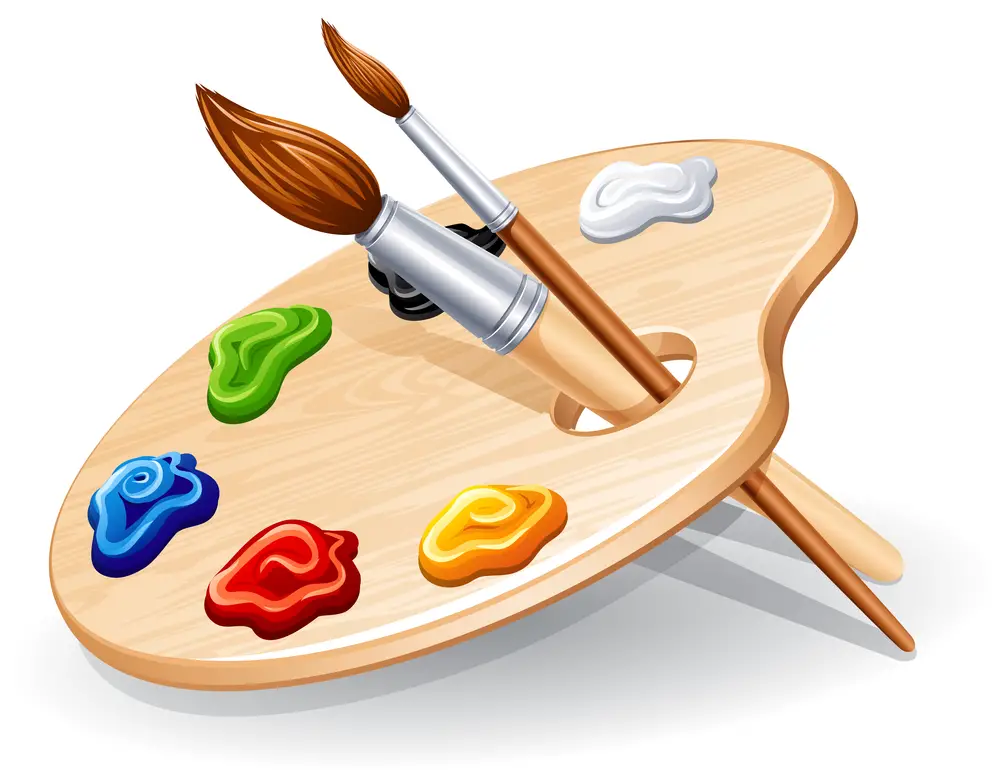
Palette Maintenance and Care
A well-maintained oil painting palette contributes to the lifespan of your beautiful artwork. Proper care and maintenance of the palette are essential to keep it in the best condition and to ensure your color mixing remains accurate.
When selecting an oil painting palette, choose a warp-resistant material. Tight-grain wood, ceramic, and glass palettes for oil painting are popular choices. These materials prevent warping while providing a smooth mixing surface. Make sure your palette is treated with an imprimatura or sealant, which protects it from the harmful effects of oil paint and solvents.
Easel maintenance is equally important as it gives the artist an elevated, stable platform to work on. Regularly inspect your easel’s joints and screws to ensure it remains sturdy. It’s advisable to keep a clean cloth around for wiping excess paint from your palette and tools.
To care for your palette, make sure you:
- Clean your palette regularly to prevent tough, dried paint from building up. Wipe away any unused paint with a palette knife and use a soft cloth to lightly apply some solvent to remove any remaining residue.
- Dry the palette completely before storing it away, as moisture can damage certain materials, such as wood.
- Store your palette flat, as some palette materials can warp if stored unevenly. This helps maintain your palette’s shape and stability.
- Regularly assess the condition of your palette and replace it as needed. Over time, palettes can become scratched and stained, affecting your color mixing accuracy.
Taking good care of your palette will create a more enjoyable painting experience, result in more accurate color mixing and extend the life of your oil painting equipment.
Oil Painting Techniques and Tips
When it comes to creating a perfect oil painting palette, understanding various painting techniques is crucial for artists. One influential artist, Richard Schmid, has mastered these techniques, and his expertise is evident in his exceptional work.
Blending is a technique where two or more colors are seamlessly mixed together on the canvas. This method creates smooth transitions between tones and helps in rendering realistic effects. Using a clean, soft brush is essential for blending colors effectively.
Scumbling is another technique where a thin, semi-opaque layer is applied on top of a dried paint layer. This helps in creating a textured, hazy effect, and it is often used for depicting atmospheric elements in a painting. The scumbling method is an excellent way to modify colors and add depth to the composition.
Impasto involves applying thick layers of paint directly onto the canvas with a palette knife or a brush, creating a textured, sculptural effect. The thickness of the paint allows light to bounce off the raised surfaces, adding volume and interest to the artwork. Additionally, impasto can create a sense of movement and energy in the painting.
Underpainting is a foundational technique where a monochromatic base layer is painted on the canvas to establish the composition’s values, such as light and shadow. By starting with an underpainting, the artist can make adjustments to the composition before building up layers of color. This technique also helps in achieving better color harmony and depth.
By mastering these essential oil painting techniques, artists can expand their abilities and create captivating artwork. Don’t forget to experiment and find the methods that work best for your personal artistic style.
Conclusion
In summary, a perfect oil painting palette should be tailored to the artist’s needs and preferences. Considering the budget is essential when selecting a palette, as there are various options available at different price points. Artists should opt for a palette that offers good value for their money without compromising on quality.
When it comes to convenience and easy clean-up, a tear-off palette may be the best choice. This type of palette allows artists to simply dispose of the used sheet and start fresh with a clean surface for their next painting session. Tear-off palettes can be especially beneficial for those who create multiple artworks in a short timeframe.
The non-absorbent property of a palette plays a crucial role in retaining the vibrancy and consistency of oil paints. Materials such as glass and acrylic are known for their non-absorbent surfaces which prevent paint from drying out too quickly. This feature allows artists to have more control over their color mixing and blending processes.
Lastly, the colour of a palette can influence the way an artist perceives and organizes their colors. A neutral-colored palette, such as grey or beige, does not add unwanted undertones to the colors being mixed, resulting in a more accurate representation of the final color on the canvas.
By taking these factors into consideration, artists can confidently choose the ideal oil painting palette that best complements their creative process and enhances their overall painting experience.
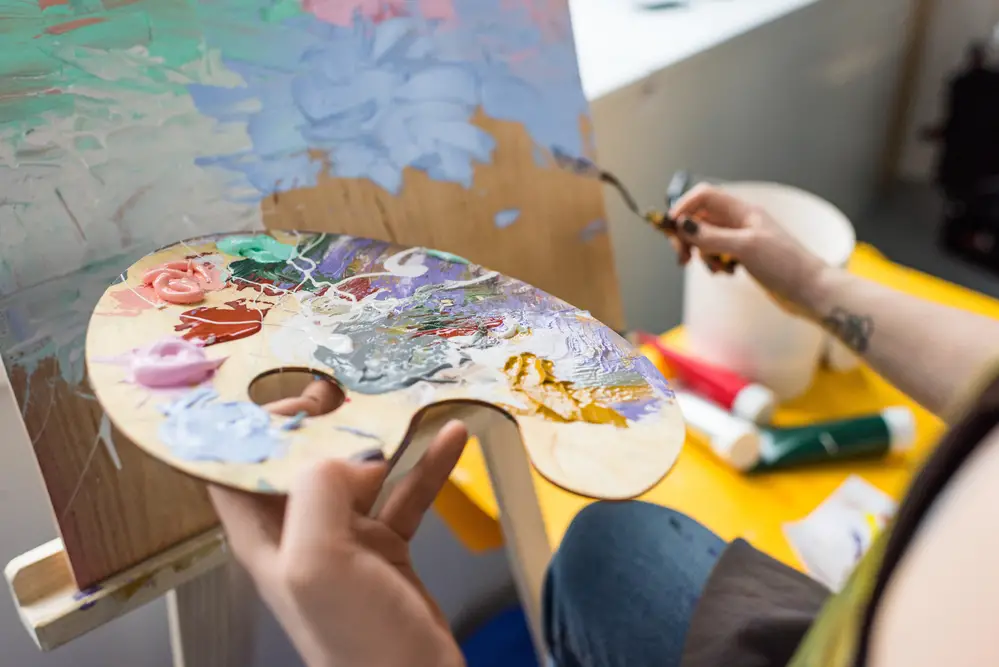
Frequently Asked Questions
What are the best materials for an oil painting palette?
There are several materials commonly used for oil painting palettes, such as wood, glass, plastic, and metal. Each has its pros and cons. Wooden palettes are traditional, lightweight, and can be easily held in the hand. Glass palettes are easy to clean and provide a neutral surface for color mixing. Plastic palettes are inexpensive and durable, but may be harder to clean. Metal palettes, such as aluminum, are sturdy and easy to clean but can be heavier.
How should I set up my oil painting palette?
When setting up your oil painting palette, you can follow a few guidelines to help with efficient color mixing and organization. First, arrange the colors along the edge of the palette in a specific order based on color family, such as from warm to cool or light to dark. Keeping your titanium white and other light colors on one side and your darker colors on the opposite side can also help reduce cross-contamination. Finally, leave plenty of space in the center for mixing.
What colors should be included in an ideal oil painting palette?
An ideal oil painting palette should include a range of colors that gives you the flexibility to mix a wide array of hues and shades. This usually includes the primary colors (red, yellow, and blue), secondary colors (green, orange, and purple), and earth tones (ochres, siennas, and umbers). Additionally, you should include titanium white and an ivory or lamp black. The specific colors you choose will depend on your personal preferences and painting style.
Do I need a lid for my oil paint palette?
A lid can be a useful addition to your oil paint palette, primarily for keeping dust and debris out of your paints when not in use. Oil paint dries slowly, so a lid may also help keep your paint fresh for a longer period, allowing you to work on a painting over multiple sessions without having to constantly remix your colors.
Is a glass or plastic palette better for oil painting?
Both glass and plastic palettes have their benefits for oil painting. Glass palettes are easy to clean, less prone to staining, and provide a neutral mixing surface. Plastic palettes, on the other hand, are lightweight, durable, and less expensive. However, they can be harder to clean due to the porous nature of some plastics. Ultimately, the decision comes down to personal preference and priorities in terms of cost, durability, and cleaning convenience.
What are the advantages of using a glass palette for oil painting?
Glass palettes offer several advantages for oil painting. They are easy to clean: oil paint can be easily scraped off with a palette knife, and any residues can be removed with a solvent. Glass palettes are also less likely to stain and are impervious to the absorption of paint, making them more suitable for color mixing. Additionally, the smooth surface of a glass palette allows for more precise control of paint mixing, and the neutral color of clear or frosted glass helps in assessing color accuracy.
